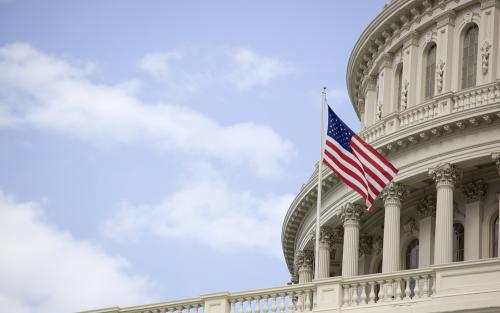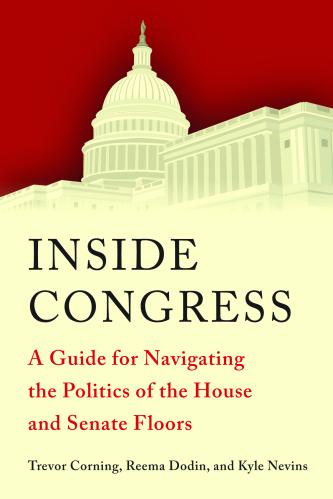The ongoing national debate over the Federal Communications Commission’s net neutrality rules started a new chapter this week. Senate Democrats, led by Senator Ed Markey (D-Mass.), filed a petition that will force a vote on overturning the Commission’s 2017 decision to undo rules from the Obama administration. In doing so, Markey and his colleagues will take advantage of a complicated, but increasingly important, tool in Congress’s toolbox: the Congressional Review Act, or the CRA.
The process of using the CRA to roll back a given regulation begins when Congress receives a rule proposed by the executive branch. From there, members of Congress have 60 days (defined as calendar days excluding certain periods in which either the House or Senate is adjourned) to introduce a resolution disapproving of the rule in question. There’s a parallel, 60-day clock (excluding days on which the Senate does not meet) for action on the resolution in the Senate; if the Senate does not complete initial consideration of the measure during that window, the resolution is no longer eligible for special, expedited procedures in the Senate.
These expedited procedures give the CRA its power. Once a disapproval resolution is introduced in the Senate, it is referred to the relevant committee; in the case of the net neutrality resolution, that’s the Committee on Commerce, Science, and Transportation. If the panel doesn’t send the resolution to the floor within 20 calendar days of the rule having been sent to Congress and published in the Federal Register, a petition signed by 30 senators can be filed to force the measure out of committee and on to the calendar. From there, a motion to begin debate on the resolution and the resolution itself are protected from a filibuster. A CRA resolution, then, does not need to clear the 60-vote hurdle that confronts many other pieces of legislation in the Senate.
After its passage in 1996, the CRA largely lay dormant as a tool for actually rolling back regulations promulgated by the executive branch. It was used once, in 2001, to undo a Department of Labor ergonomics regulation, but was not used successfully again until 2017. This is largely because CRA resolutions require either the signature of the president or the support of two-thirds both chambers of Congress to override a veto. But a president is unlikely to sign a repeal of a regulation finalized by his own administration, and veto-proof majorities are hard to come by.
That dynamic, when combined with the window the CRA provides for repeal, means that there is a relatively narrow period after control of the White House has changed party hands in which CRA efforts are most likely to be successful. When Republicans found themselves in control of the House, Senate, and White House at the start of 2017, they leveraged these favorable circumstances and adopted 15 CRA resolutions that were signed by President Trump. (In recent weeks, thanks to an interpretation of the CRA’s congressional submission requirement, Congress has begun considering CRA resolutions for older regulatory actions. The reach of this effort remains to be seen.)
What Senate Democrats are doing with the CRA this week, however, is something different from what their Republican colleagues did last year. Even if the net neutrality resolution successfully clears the Senate, it would still need to make it through the House and either be signed by the president or garner enough support to override a veto to take effect. Reports indicate that Sen. Susan Collins (R-Maine) supports the bill, which, given Sen. John McCain (R-Ariz)’s continued absence from the chamber, could be enough to get the measure over the finish line in the Senate if all 49 Democrats are be present and voting in favor of the resolution. It would not be enough, however, to overcome a potential veto, and the measure’s prospects in the House, where Republicans enjoy a larger majority, are uncertain.
The net neutrality CRA resolution may be unlikely to ultimately change FCC policy, but Democrats’ efforts on the issue can still have political value. Political science research has documented the value of “doomed to fail” bills as a tool to convey to interest groups and other allies outside the chamber that a given party in Congress agrees with their position. Because it makes it easier to force a floor vote, the CRA is an especially attractive tool for Senate minority parties to engage in this kind of signaling. Indeed, as I have discussed elsewhere, Senate Republicans used the CRA in this way repeatedly during the last two years of the Obama administration. In 2015 and 2016, they forced votes on a range of regulations opposed by key Republican interest groups, including ones involving union election rules, the Clean Power Plan, pollution standards for wetlands and streams, catfish inspections, and fiduciary standards for retirement brokers.
Democrats, then, are likely doing the same thing: using the CRA to generate a chance to go on record in support of a policy unpopular with key party constituencies. A November 2017 Morning Consult/Politico Poll found that 55 percent of Democratic respondents support net neutrality, and several progressive groups have focused on the issue. Even if the measure stalls out after this week’s Senate vote, then, it may still stand as a political win for Democrats.









Commentary
How congressional politics drive the net neutrality debate
May 10, 2018